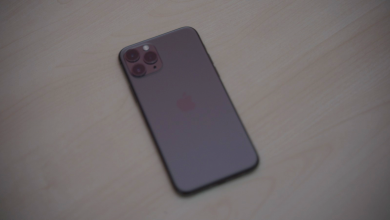Samsung Galaxy S10 Review
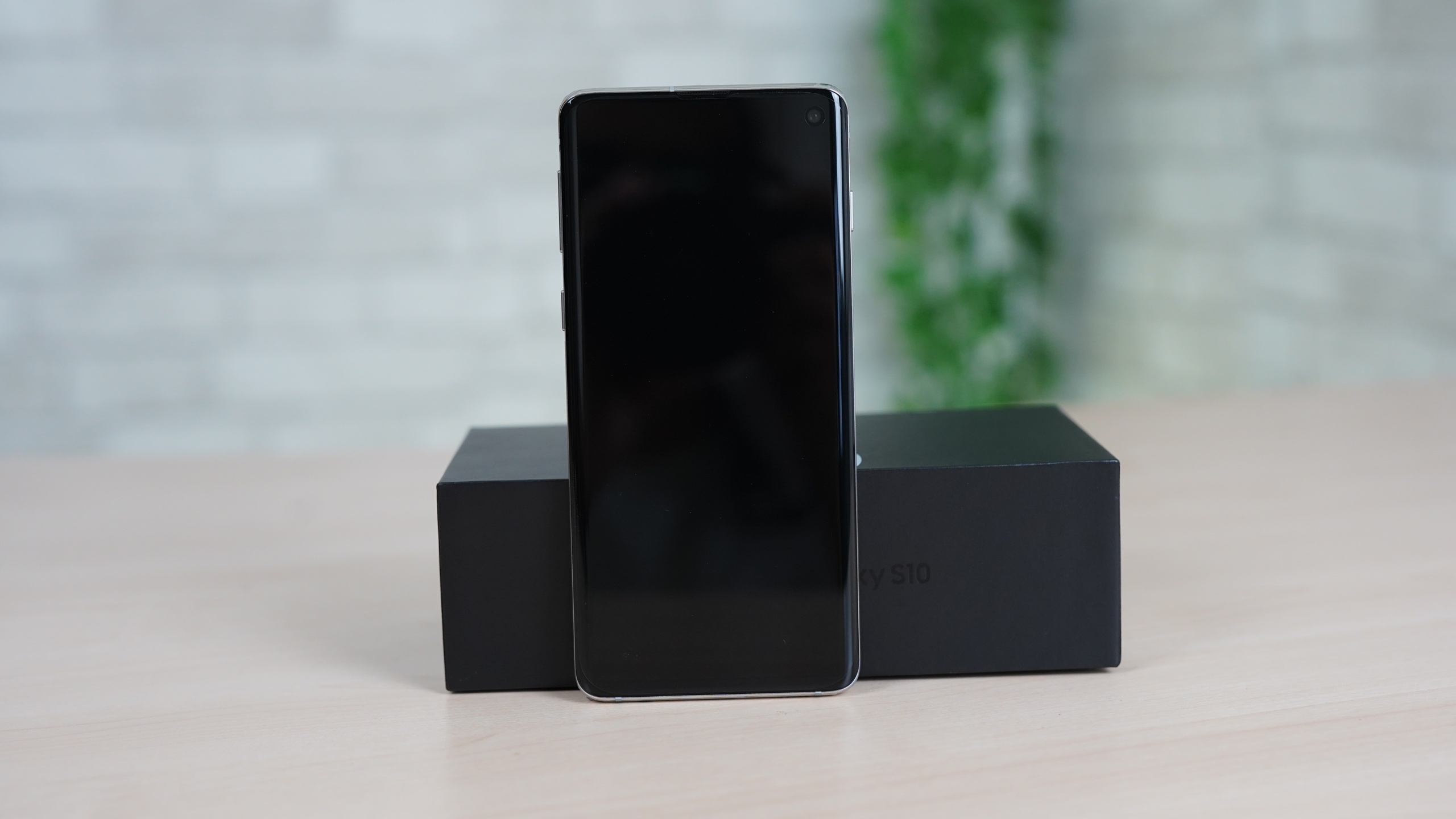
The South Korean giant Samsung’s premium flagships are known for their strikingly beautiful design, solid hardware, top-notch cameras, and superb display. Fortunately, the Galaxy S10 is no exception, it’s certainly a revolutionary upgrade rather than an evolutionary upgrade.
PRODUCT INFO Galaxy S10 Manufacture Samsung Available at View at Amazon
Usually, when a new flagship is out, not many people jump on the bandwagon of upgrading their device to the latest one. But, The Galaxy S10 was an exception because of the number of upgrades it brought up to the table.
Despite the fact the Galaxy S10’s successor is out, it is still considered one of the best premium flagship available in the market. Samsung’s latest S series flagship Galaxy S20 brings an upgrade in cameras, latest hardware, and above all 5G connectivity. The Galaxy S10’s design, cameras, and hardware are still good enough to rank amongst the top-tier flagships of 2020.
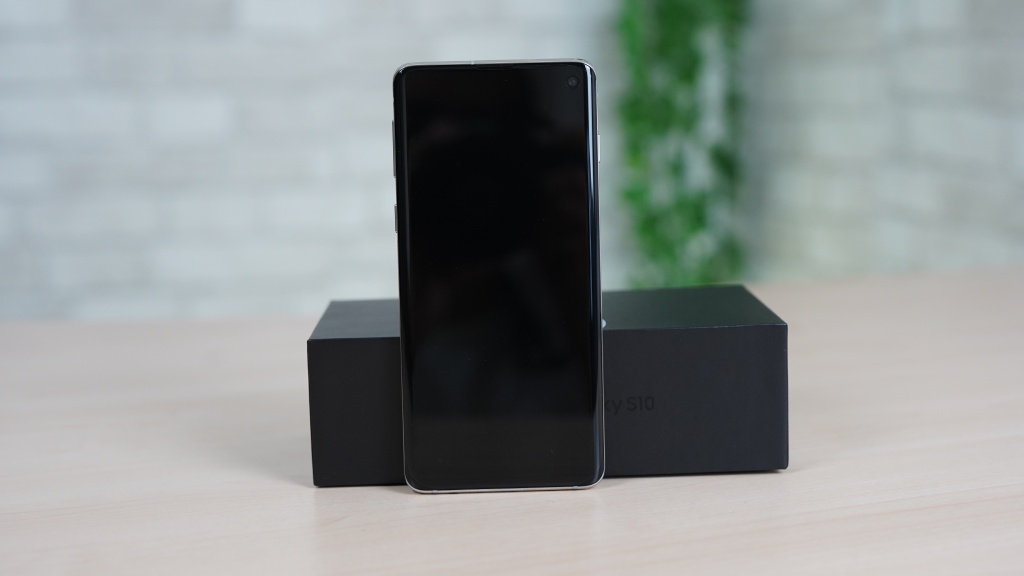
With each new iteration, the companies are trying to reduce the bezels as much as possible. The Galaxy S10 was the Samsung’s first premium flagship phone with Infinity Display. The edges were curved with almost zero bezels. Apart from the Galaxy S10, the Infinity-O Display was utilized on the larger S10 Plus and budget-friendly S10e. The Punch-hole is on the top right corner for the selfie snapper whereas all other sensors are embedded behind the AMOLED panel.
The S10 was the first flagship with WiFi 6, HDR10+ and it also supports “Wireless PowerShare”. Today we will do an in-depth review of the Galaxy S10 to know in detail whether the device is still good enough to be rated amongst the top-tier flagships. Without any further delay, let’s kick off with the release date and price details.
In the Box
- Phone
- 3.5mm AKG earphones
- OTG Adapter
- Quick Start Guide
- Type-C USB cable
- Fast Charging Adapter
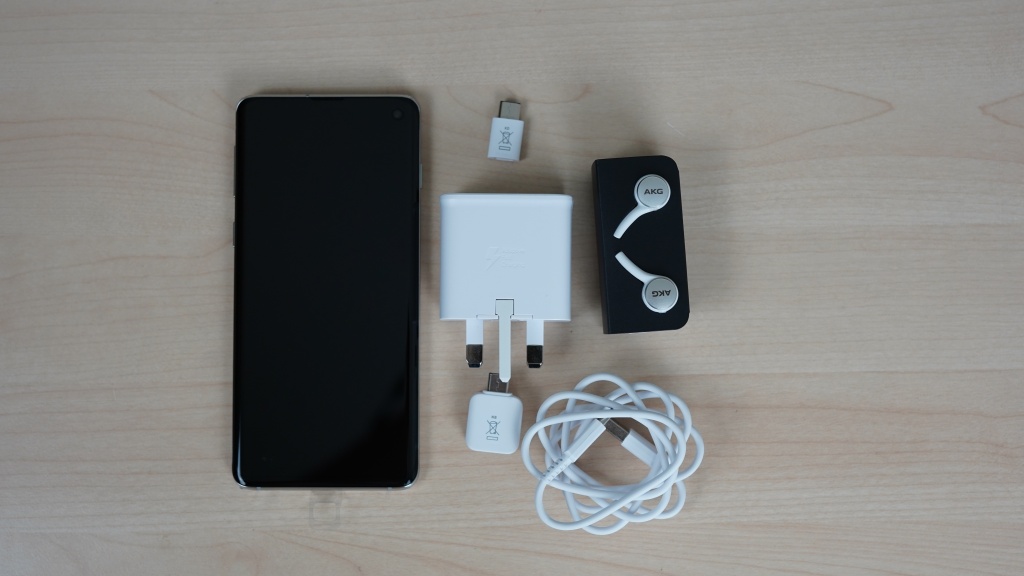
Release date and Price
The Galaxy S10 was unveiled last year on February 20th, the pre-orders started soon after the announcement in many regions. It was released on March 8th in almost all regions across the globe. Thanks to being a year older, it is now available at a much lower price tag. At the time of the announcement, the Galaxy S10 was significantly expensive than its predecessor, same year Apple announced iPhone XS at an even heftier price tag.
As a cheaper alternative, the Galaxy S10e is available at even lower price tags whereas the mighty Plus variant is costly amongst all. The Galaxy S10 base variant with 128GB native storage is currently available at $749 / £699 / AU$1,149. Although the device supports Micro-SD card if you want more native storage, you can opt 512GB model at a hefty price tag of $1,149 / £999 / AU$1,699.
On the other hand, the Apple iPhone XS base model costs $100 more and it comes with 64GB built-in storage. If you can wait you can grab the S10 at even lower price tag during special deals and discounts.
Display, Resolution and Viewing Experience
At the time of launch, Samsung claims the three key aspects of the Galaxy S10 lineup are its display, hardware performance, and camera capability. No doubt Samsung paid special attention to all these aspects to make it perfect. The Galaxy S10 is packed with one of the finest displays which are still rated amongst the best even after one and a half years.
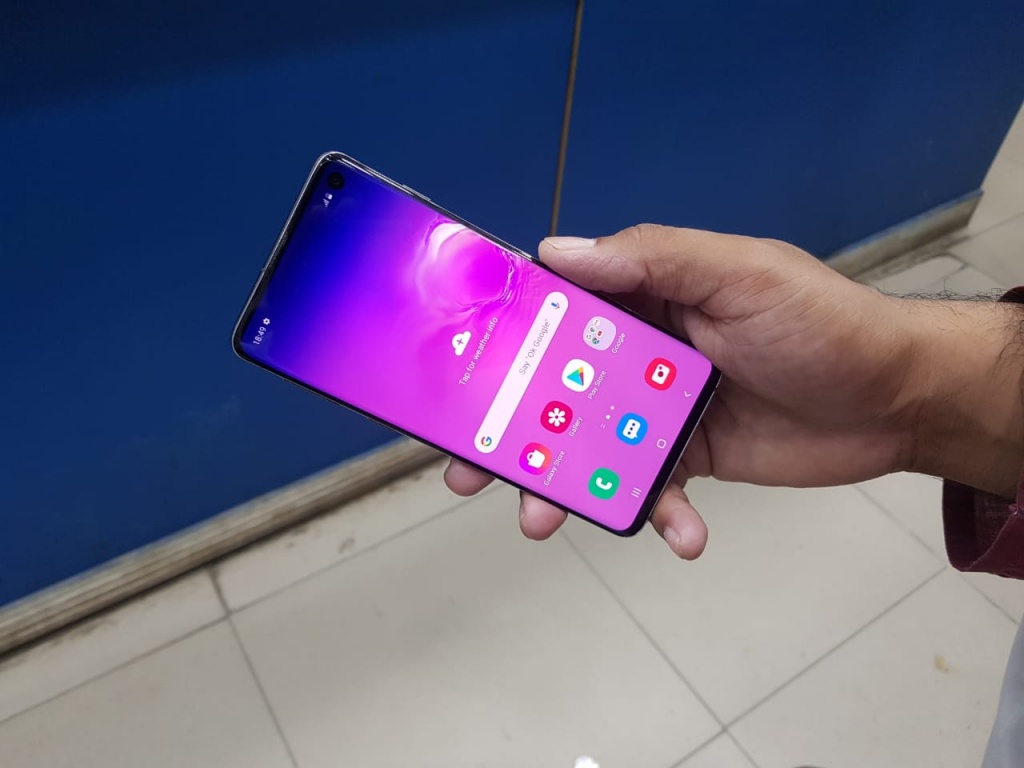
As far as the display is concerned the South Korean giant Samsung is certainly leading the pack with a great margin. The Galaxy S10 features a stylish Infinity-O Super AMOLED display of 6.1-inches with an aspect ratio of 19:9 and 93.1% screen-to-body ratio. Just for the sake of reminder, the Galaxy S9’s screen-to-body ratio was 83.6%.
For the Galaxy S10, the company utilizes the Dynamic OLED panel, the best aspect of this panel is a 42% reduction in the user’s eye strain by controlling the blue light and brightness level. To further improve the contrast ratio and color accuracy the S10 comes with HDR10+ support. The viewing angles of the S10 with Quad HD+ resolution looking quite stunning especially while watching Hi-Resolution content.
Thanks to the Quad HD+ screen resolution and the pixels density of 550 pixels-per-inch the display detail level is pretty good. To save the battery life the display can be switched to Full HD+. The 0 shaped punch-hole at the top right corner isn’t as distracting as the notch on iPhones. It measures 149.9 x 70.4 x 7.8mm and weighs 157g. The Galaxy S10 is slightly taller and wider as opposed to its predecessor but it is slightly thinner and weighs less. Despite having a 6.1-inches display the device doesn’t look bulky instead you can easily grab it single-handedly.
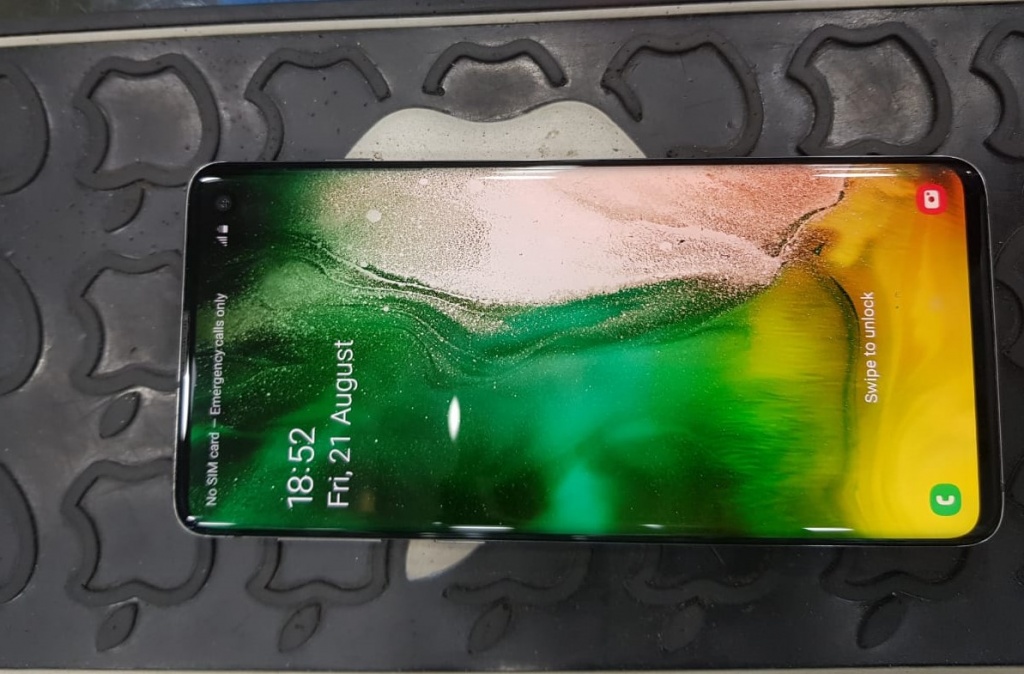
The color accuracy, vibrancy, and brightness level of Galaxy S10 display are still better than most of the latest premium flagships in the market. There are a couple of options for viewing experiences. By default the device is set to natural colors, however, you can opt for the vivid option which allows tuning of color saturation and white balancing. To further reduce the blue light strain there is a dedicated “Night Mode” with a darker background.
Design, Specs & Build Quality
Every year Samsung brings significant changes in the design language. Initially, the company brought new designs every year, however from the last few years the company stuck to Apple’s plan of unveiling new designs after two years. The Galaxy S10 brought revolutionary changes in the design department as opposed to the predecessor. Under the S10 lineup, three phones were unveiled including S10e, S10, and S10 Plus. The S10 falls between S10e and S10 Plus in terms of size. You will find it smaller than its direct competitors OnePlus 6T and LG G8.
Samsung is bringing flagships with metal glass sandwich design from quite some time and the Galaxy S10 is no exception. However, it is further refined to fit into a large display in a compact body. The chassis is made up of aluminum with gently curved glass covering the front and rear sides.
The rear glass is protected with Corning Gorilla Glass 6, it was one of the first phones with such protection. On the rear side, you will get triple cameras aligned horizontally in the center. It is available in a number of strikingly beautiful colors including Prism Green, Prism Black, Prism White, Prism Pink, Prism Blue, and Canary Yellow.
The volume rockers and power buttons are on the right edge where the Bixby AI Assistant button is on the left edge. As expected the glass rear attracts fingerprint imprints that’s why it is recommended to use it with a case. It will not only save the fingerprint smudges but also saves the device in case of an accidental drop. The Galaxy S10 is an IP68 certified phone which means it can resist under 1.5 meters deep water for 30 minutes without any damage.
Unlike its predecessor, the Galaxy S10 comes with an under-glass fingerprint scanner. The Galaxy S8 and S9 had scanners on the rear alongside the cameras setup whereas the Galaxy S7 and earlier phones had a scanner on the front below the physical home button. The Galaxy S10 was the company’s first flagship phone with an Ultrasonic fingerprint scanner. This scanner works more efficiently and securely than traditional optical sensors as it creates a 3D Scan of a fingerprint to unlock. However, it isn’t as fast as optical sensors but works even with wet fingers.
Another important aspect is Galaxy S10’s fingerprint scanner doesn’t work with all third-party protectors instead you will have to use only Samsung certified protectors. However, the good thing is the device is comes with a pre-applied protector straight out of the box.
Audio Output
Samsung is well aware that many customers are not happy with Apple and Huawei’s decision of removing the traditional 3.5mm headphone jack. That’s why Samsung still retains the traditional headphone jack for the Galaxy S10 lineup. The device is shipped with AKG earbuds straight out of the box.
To provide the surrounding stereo sound effect the Galaxy S10 comes with Stereo Speakers including the earpiece and bottom-firing speakers. Once the device is leaned both the speakers provide superb audio experience with great clarity and high bass. Overall the sound output is enough to fill the single room while watching videos and listening to music.
If you are amongst those who like to connect wireless headphones, you don’t have to worry because the Galaxy S10 supports Bluetooth 5 which provides fast and stable connectivity. It supports Dolby Atmos and comes pre-loaded with equalizer.
Camera
The camera setup was certainly one of the key selling aspects of the Galaxy S10 lineup. All three phones have different camera options. The budget-friendly S10e comes with dual rear cameras and single selfie snapper, the S10 has triple rear cameras and single selfie snapper whereas the S10 Plus comes with triple rear and dual selfie snappers.
The Galaxy S10 was the company’s first offering with triple rear cameras which brings a lot of options to capture different kinds of shots. Apart from the standard camera sensor, you can utilize the wide-angle sensor as well as a 2x optical zoom for telephoto shots. Samsung tries to cater to most of the user’s demand in capturing shots.
The primary snapper on the rear is the main 12MP lens with a variable aperture. In stable lighting conditions, the aperture is f/2.4 whereas in low-light scenarios you can switch it to f/1.5 to capture more light.

The secondary sensor on the rear is a 12MP optical zoom sensor with f/2.4 aperture. Last but not least you will get a 16MP Ultra wide-angle sensor with f/2.2 aperture. Let’s have a look at our sample shots captured using different modes and sensors.
Samsung dubbed portrait mode as Live Focus which allows users to capture with blurred background. The best thing is you can adjust blur intensity even after capturing the shot. A number of blur filters available including zoom, spin, color point, and artistic. The Colorpoint mode of Live Focus allows capturing shots in black and white with blur effect.
The Galaxy S10 doesn’t lag in the video capturing either, it can record 4K videos at 30 fps. By default, the device records video at 60 fps. Not just that you can also record slow-motion videos at 960fps.
Telephoto Sensor
The detailed level of shots captured using the main sensor is pretty awesome, especially in stable lighting conditions. If you are a foodie and love to capture food photos, you can utilize the scene optimizer mode which uses AI to optimize the capturing experience.
Apart from capturing great detail, the S10’s main camera doesn’t lag behind in vibrancy, contrast, and saturation level. In low-light conditions, the results are not as crispier as Pixel 3 but still better than most of the phones in the market. Samsung certainly pays special attention to color accuracy and capturing in low-light conditions. Have a look at our sample shots in daylight, low-light, and low-light with Night mode on.
Ultra Wide-Angle
The third snapper on the rear is the new ultra-wide camera sensor with 123 degrees field of view. You can capture pretty great landscapes and street view with this ultra-wide sensor. However, not all shots are meant to be captured using this sensor because the captured images are quite wide. If you think the main snapper cropped the subject, you can utilize the wide-angle sensor in such conditions.
Undoubtedly the cameras setup on the Galaxy S10 is one of the best currently available in the market. To reduce the noise during capturing in low light conditions the HDR is quite beneficial. Even in low-light conditions the exposure level and White balancing are pretty great. One of the downsides of ultra-wide sensors is the lack of optical image stabilization that’s why it loses sharpness sometimes.
The Shot suggestion feature was the new feature which allows users to use the Neural processor prowess to enhance the framing subject capability. To further fine-tune the video recording process the Galaxy S10 features Digital Video Stabilization feature. Another good aspect is the capability to record HDR10+ videos that weren’t available on its predecessor.
Upfront the selfie snapper is 10MP module with f/1.9 aperture. It works efficiently in both daylight and low-light conditions. The color accuracy and saturation level of shots are also pretty good. The Live Focus is also available for the selfie camera as well, however, the results are not quite accurate.
Hardware Performance
Being the flagship offering the Galaxy S10 was packed with the latest best hardware of early 2019. The Galaxy S10 US and Chinese variant is running on Qualcomm’s Snapdragon 855 SoC whereas the rest of the world gets the Exynos 9820 powered model.
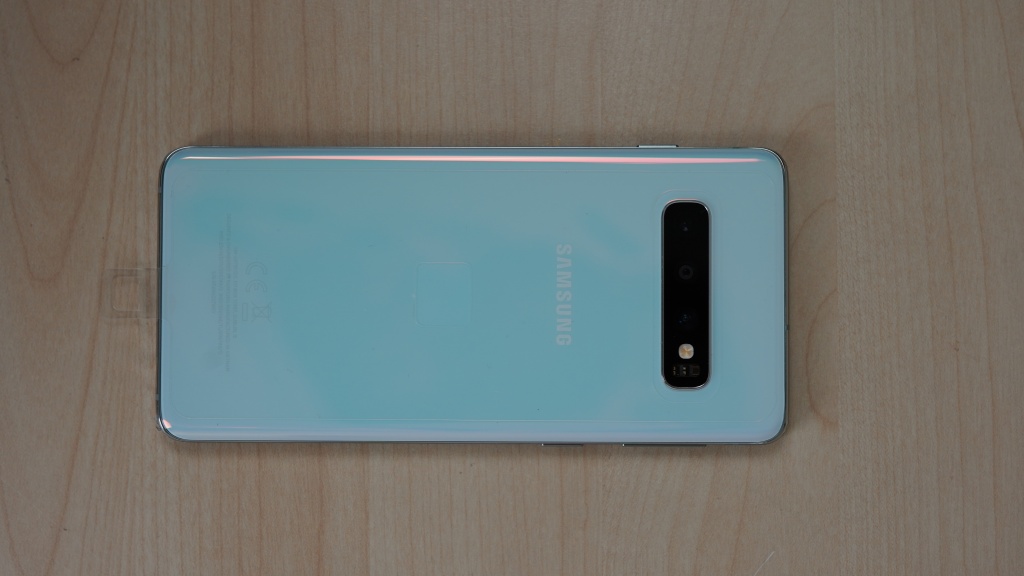
The Galaxy S10 comes with whopping 8GB RAM as opposed to the 4GB RAM of its predecessor. The base variant comes with 128GB storage whereas the top-tier model has 512GB storage. Just for the sake of reminder the S9’s and iPhone XS base model has 64GB storage. The good thing is it still supports MicroSD card to expand the native storage.
It provides a 20% faster speed than its predecessor. Despite having all these goodies it lacks vapor chamber cooling which is exclusively available on the larger S10 Plus only. So if you are an avid gamer you may consider the larger variant not just because of the larger display.
Benchmark Tests
The Snapdragon 855 powered variant multi-core results on the Geek bench are quite satisfactory. The Geekbench 5.2.0 testing shows mixed results, the device takes lead in the single-core performance, however, lags in the multi-core test. On single-core testing, the S10 achieves 766 points whereas its closest competitor OnePlus 7T is slightly behind at 757 points. The Galaxy Note 10+ is even slower at 695 points and Huawei’s flagship P30 Pro is at 684 points. Surprisingly in multi-core performance, the results are not extraordinary, the device achieved 2021 points. The OnePlus 7T is way faster at 2679 points and the Xiaomi Mi 9 received 2569 points.
This confirms the Snapdragon variant gets a huge upgrade under the hood in terms of performance. Our testing variant is running on Samsung’s Exynos 9820 SoC, the benchmark results are worth appreciating. In AnTuTu 3D Benchmark test the device achieves 389145 points which rank it amongst the fastest in the market.
Software
As OS the Galaxy S10 was pre-installed One UI based on the Android Pie 9.0 straight out of the box. Later on, the company rolled out the Android 10 based One UI 2.0 update in February 2020. Samsung’s new One UI brings a number of new UI changes to easily use the gigantic display phones easily. The One UI is especially aimed to provide natural experience and also optimized to get full use of hardware and software prowess. It brought refreshing changes in the camera app.
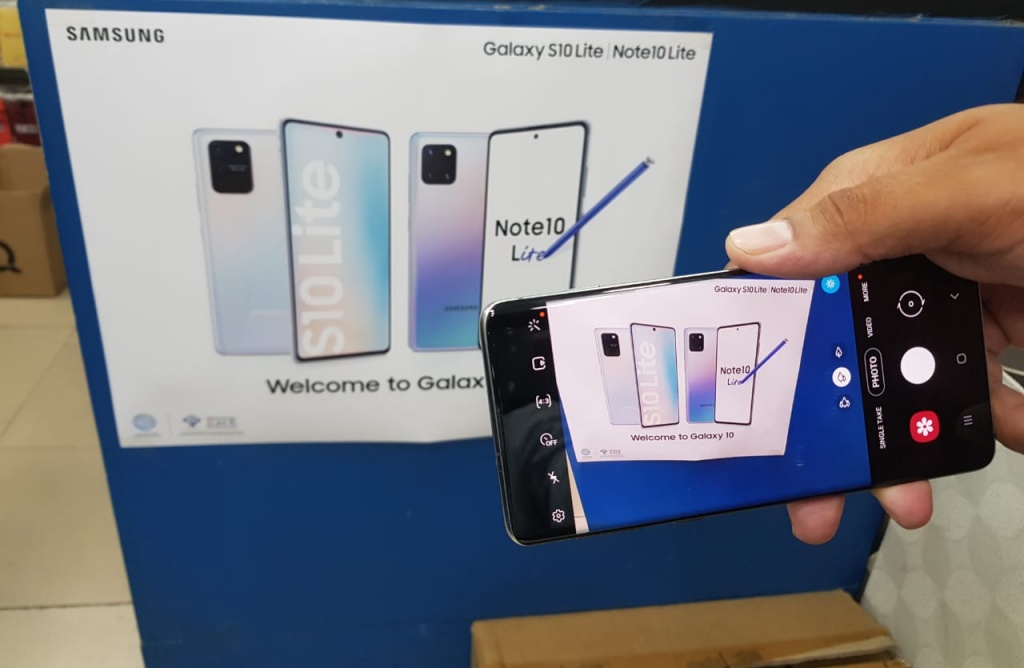
The new camera app in the One UI is quite beneficial as you can easily navigate between different modes. All you need to click the switch right next to the shutter. Apart from a variety of camera lenses, the device is pre-loaded with a number of shooting modes including Panorama, Pro-mode, hyper-lapse, slow-mo, super slow-mo, live focus, video, and photo. You just need to swipe viewfinder to access all these modes. If you are a Pro user, you can manually adjust camera settings including brightness, focus, and shutter speed and aperture size using Pro mode. To capture portrait shots the live focus mode is available with different options of blurring effect.
Last year Samsung introduced a dedicated button on the left edge for the Bixby AI Assistant. However this year Samsung allows users to reroute the dedicated button for any other app except Other AI Assistants from Amazon and Google. This showcases Samsung listens to the customers’ preference that’s why the company brought a change in their original strategy.
Battery life
The good thing is Samsung provides four different modes including “High Performance”, “Optimized”, “Medium Power Saving” and “Maximum Power Saving”. By default, the battery is at Optimized mode to save battery and provide optimal performance.
A fairly large battery cell of 3,400mAh is on board to keep the S10’s lights on. Considering the increase in the display size the 4,00mAh upgrade over the predecessor may not be quite helpful. In our brief testing, we can confirm the device can easily survive a little over a day on a single charge.
On normal to heavy usage including capturing photos, watching videos, few calls, and web surfing the device ends the day with 15% battery on optimized mode. The device conserves 20% more battery on the same usage on medium power-saving mode. The Galaxy S10 supports Qualcomm’s Quick Charge 2.0 for fast charging.
It supports Fast and Wireless charging and shipped with fast charger straight out of the box. For the first 80%, the charging speed was pretty fast, however it took almost 40 minutes to charge the remaining 20%. As you can see the graphics the device require 11 minutes to recharge the last 5%.
On average, we got around 6-7 hours of screen-on time on HD+ (1080p) which is not that bad.
The PowerShare feature allows you to recharge the other devices supporting Qi Wireless Charging. The rear side of the phone act as a charging mat. As expected it isn’t as fast as normal charging. In fact, if you try to recharge another phone it will take hours and the process isn’t worth it. However, it is beneficial in recharging accessories like earbuds.
Conclusion
The Galaxy S10 was indeed a very special flagship for Samsung as it brings a new design language as well. Not just that it also marks the 10th anniversary of the premium flagship lineup. With the 10th gen of the most successful lineup, Samsung brought a number of new upgrades ranging from design, display, powerful hardware, and new triple cameras setup. It was also the company’s first phone with Corning Gorilla Glass 6, PowerShare and Under-glass fingerprint scanner. Last but not least all these goodies come at a significantly higher price than the predecessor. Overall the S10 is a solid flagship offering a lot of stuff for people who are looking for a compact premium phone.
Samsung Galaxy S10
The Undisputed King
Pros
- Stylish Infinity-O Display
- Solid Cameras
- 3.5mm headphone jack
- Wireless Powershare
Cons
- High Price Tag
- Slow fingerprint scanner
Display: 6.1-inches, 1440 x 3040 pixels | Chipset: Exynos 9820/ Snapdragon 855, 8GB RAM | Rear cameras: 12MP+12MP+16MP | Dimensions: 149.9 x 70.4 x 8.6 mm | Battery: 3400mAh

VERDICT:The attractive Infinity-O display, top-tier hardware, and solid triple rear cameras are the key selling aspects of the Galaxy S10. If you don’t want to spend a hefty amount on the Galaxy S10, you can grab the toned downed S10e at a cheaper price tag or S10 Plus with better hardware at a steeper price tag.
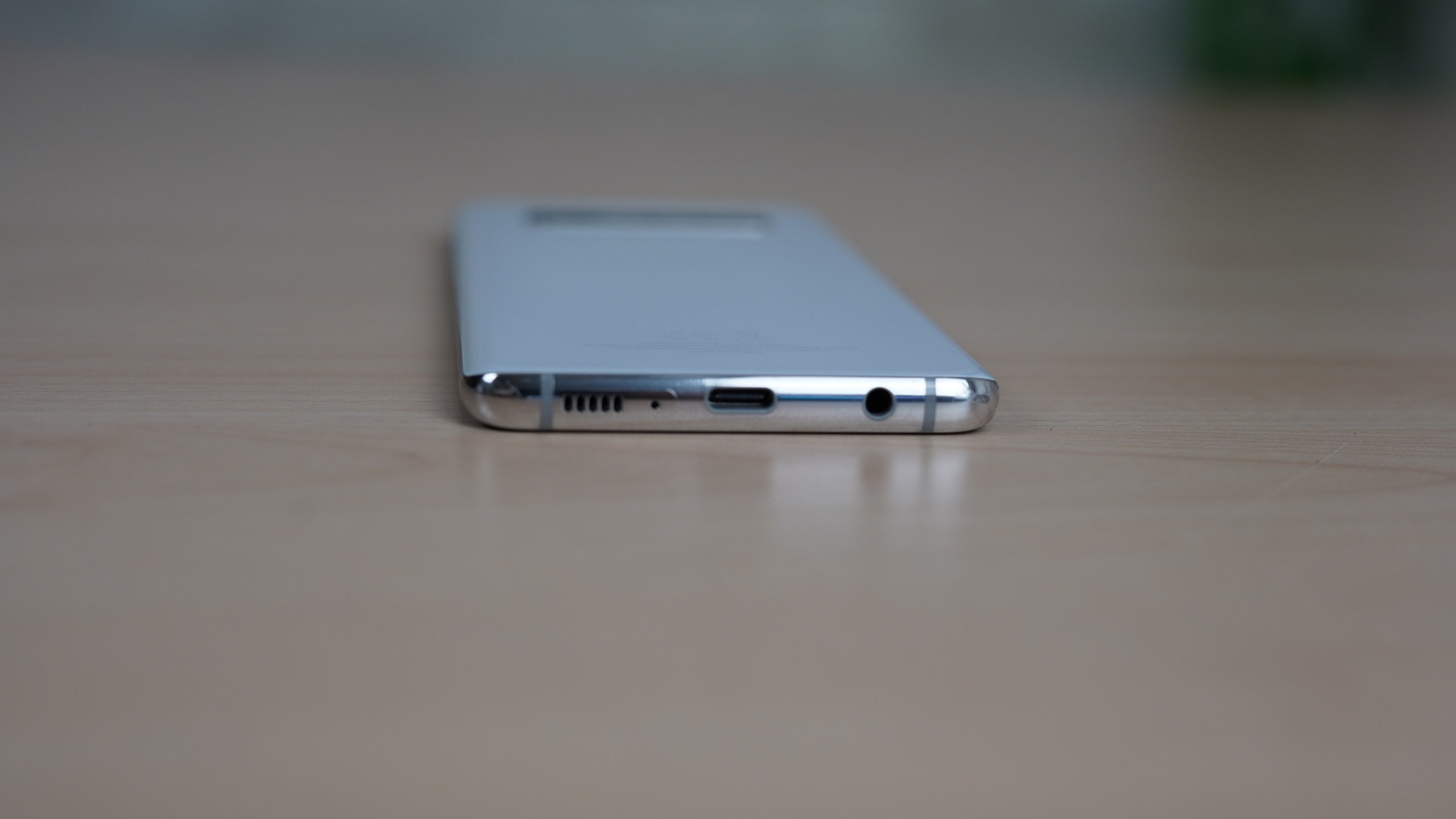
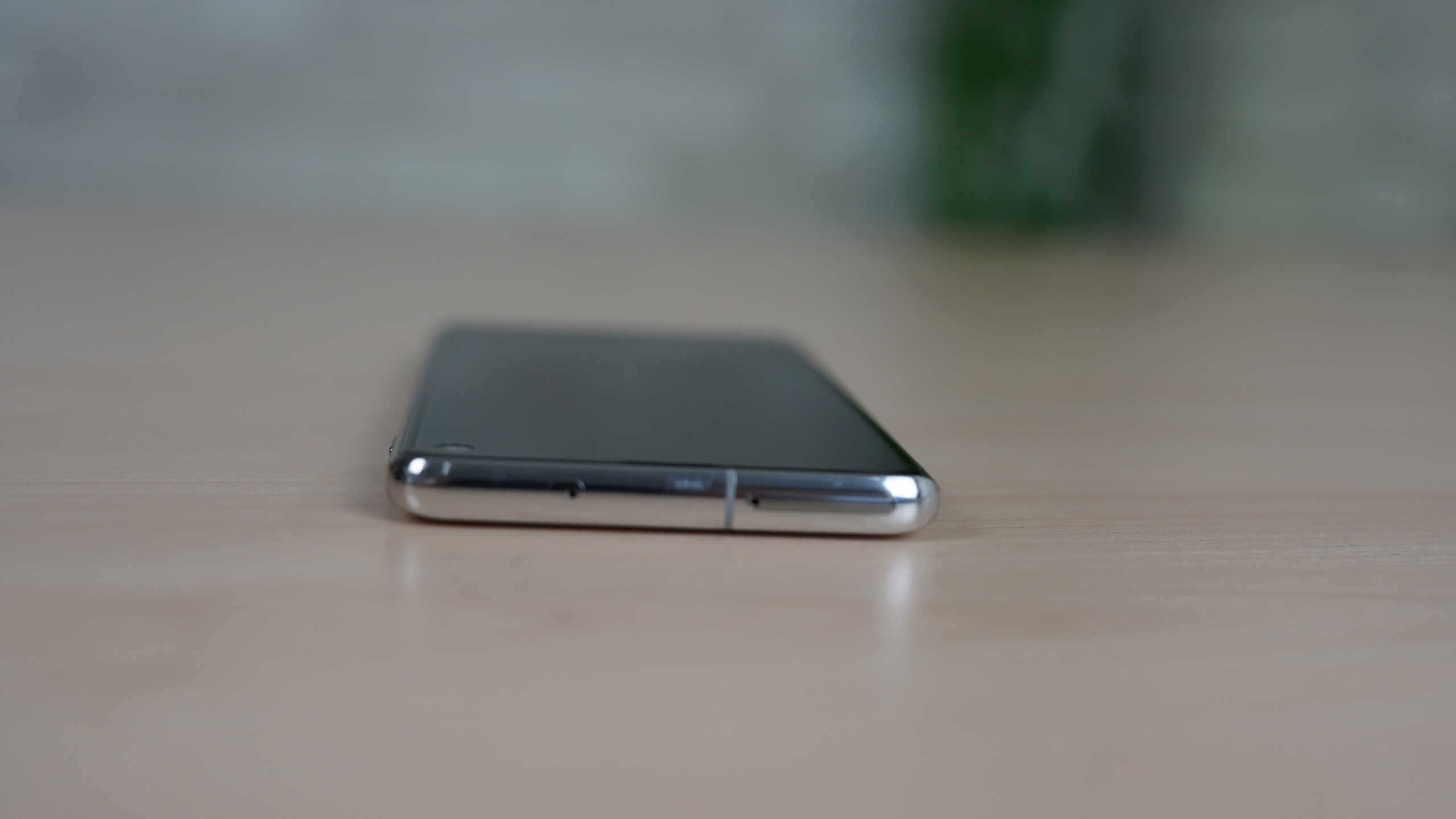
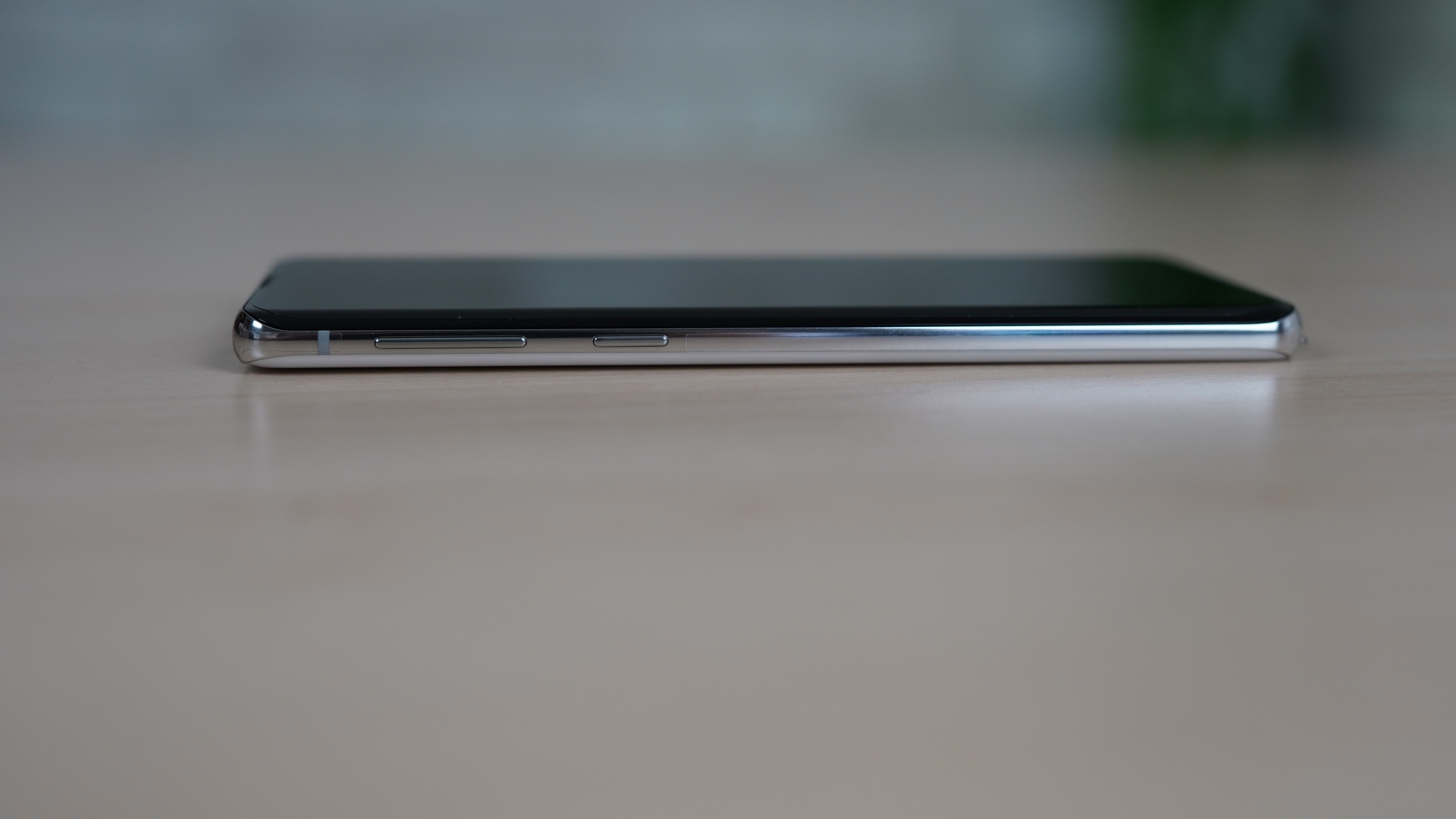
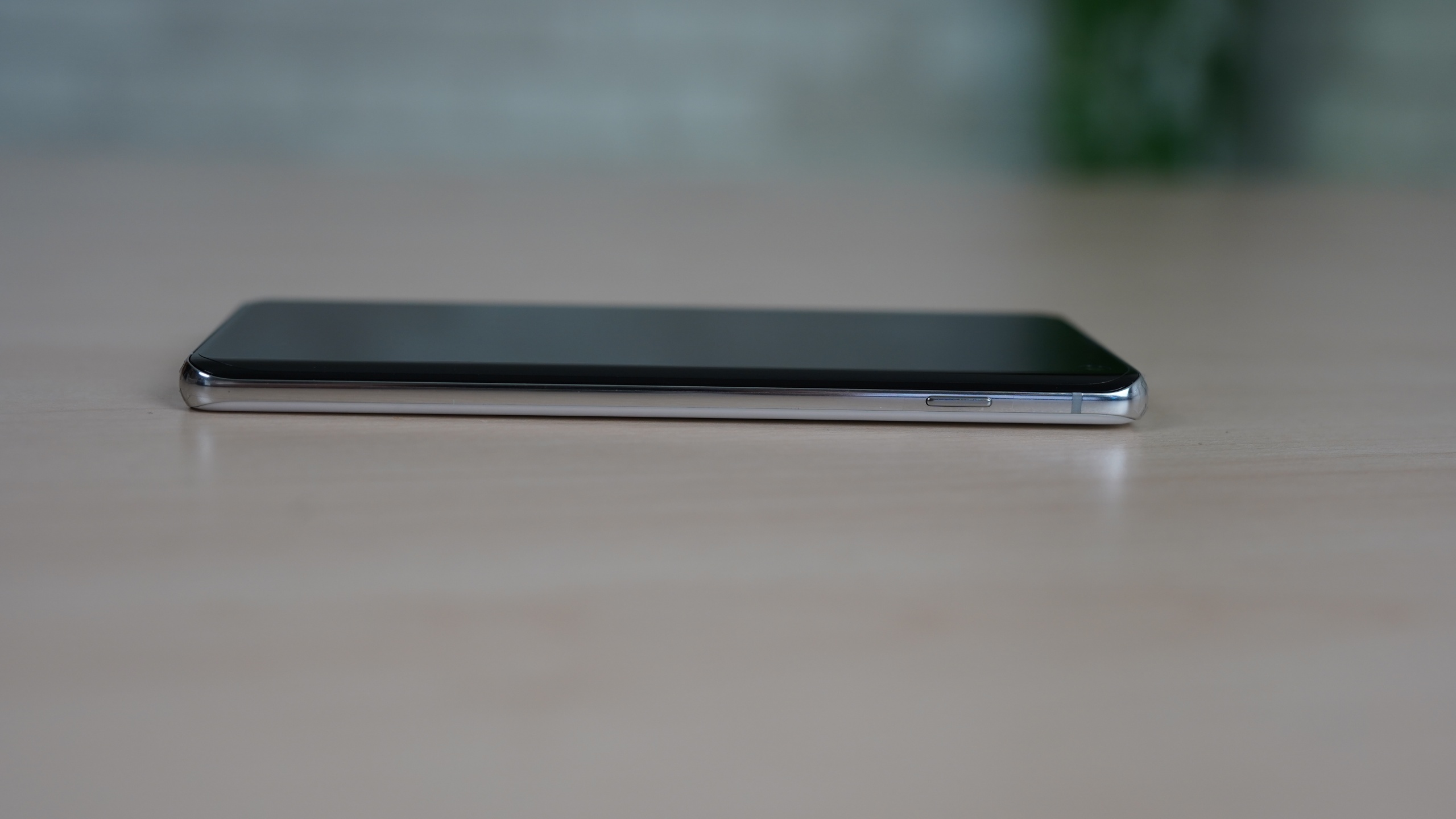


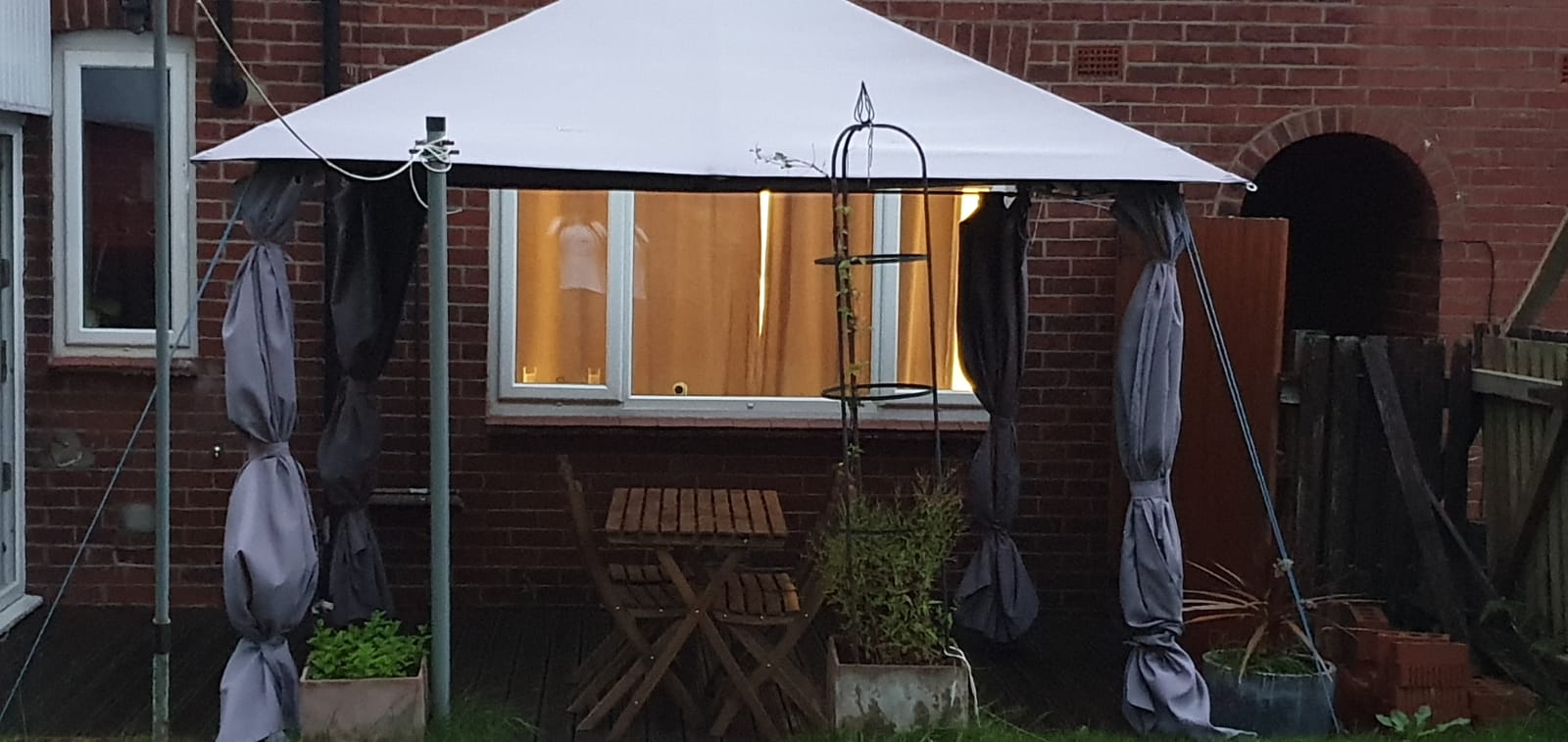
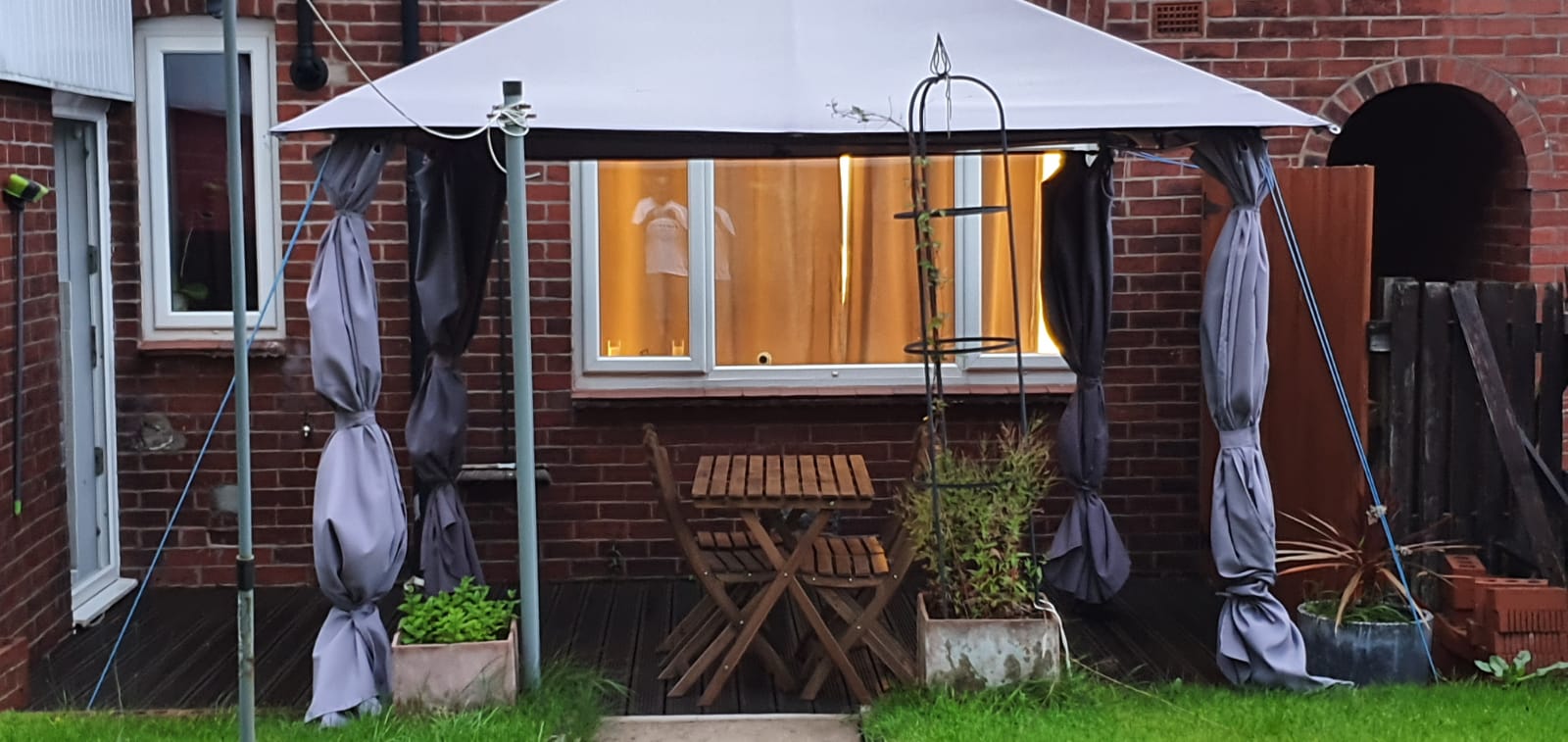

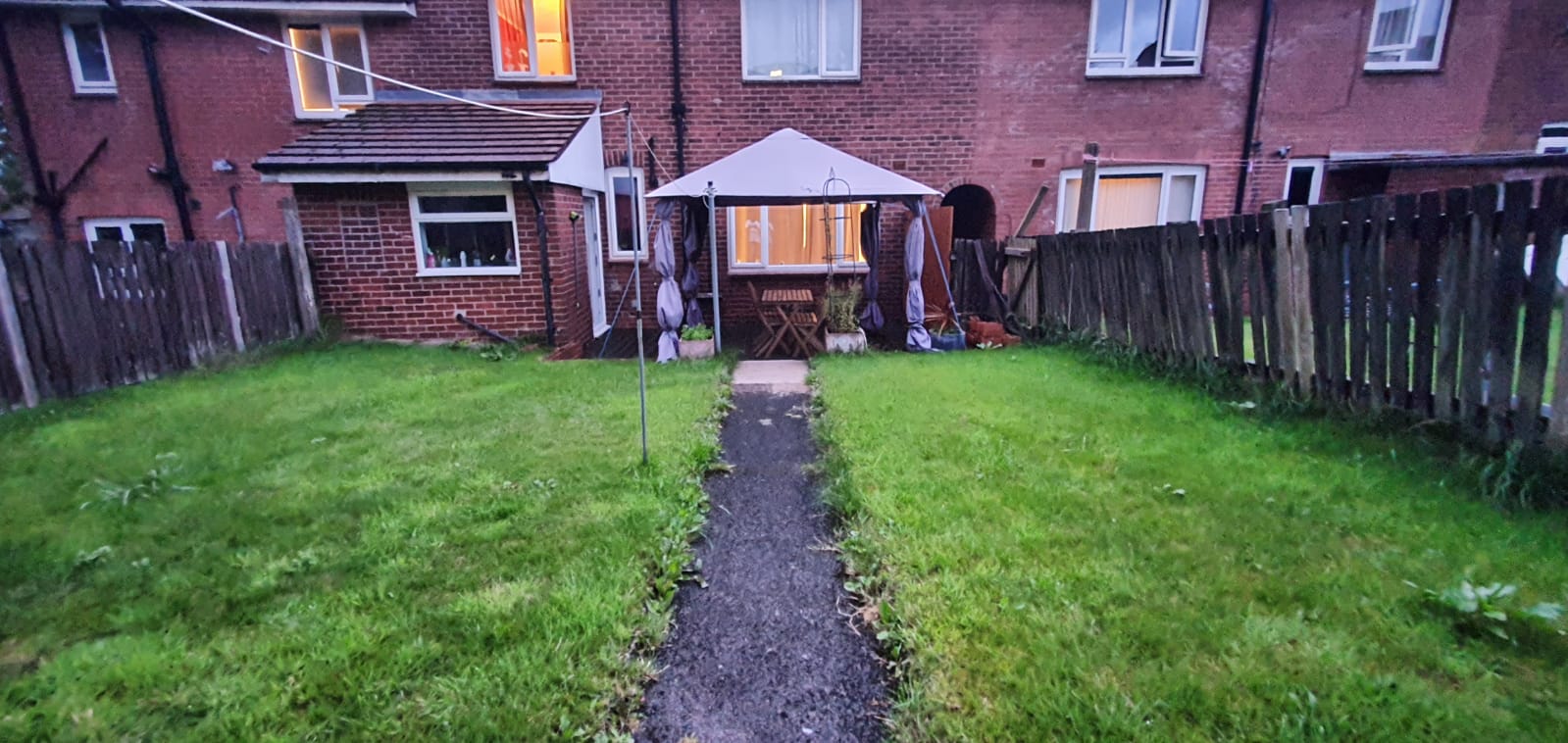
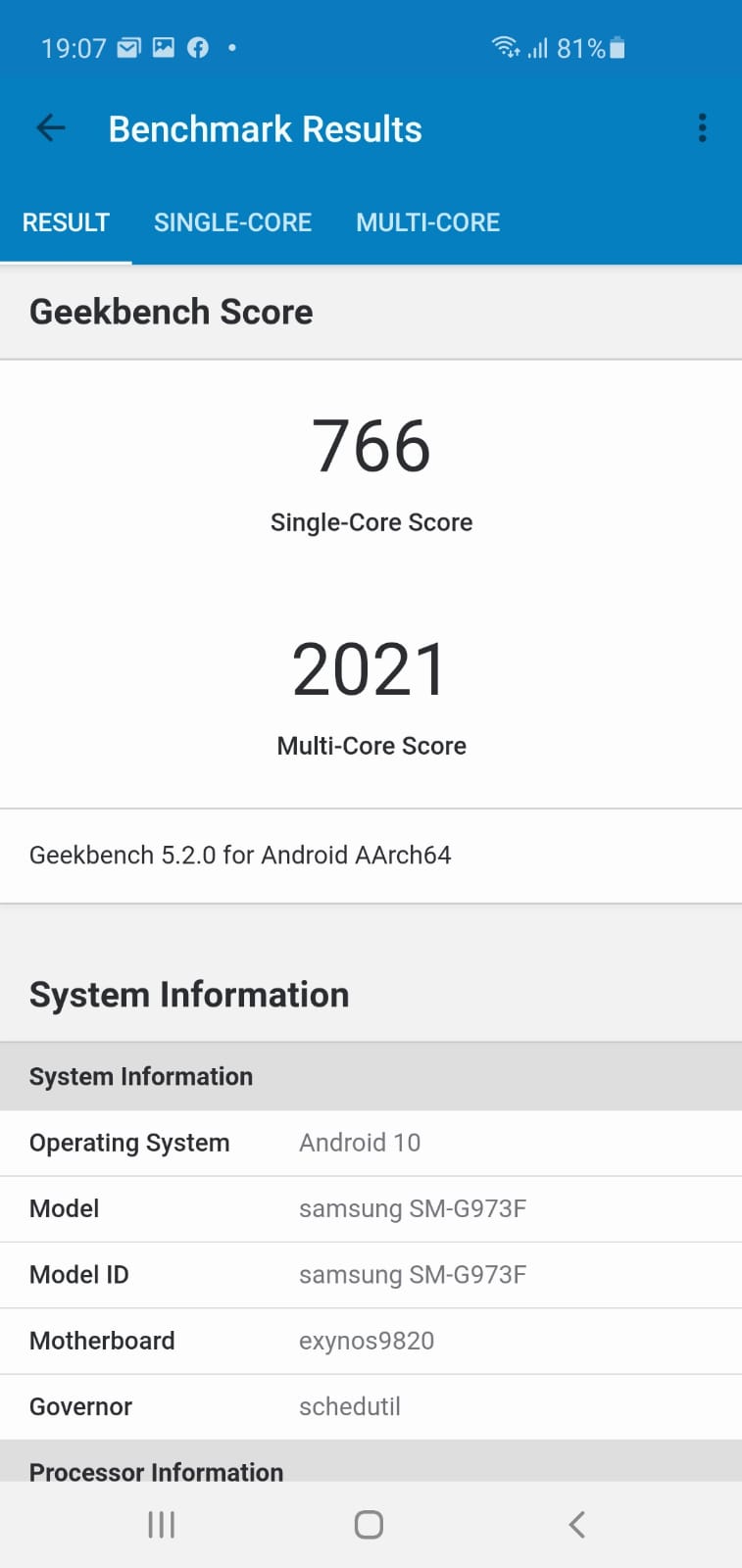
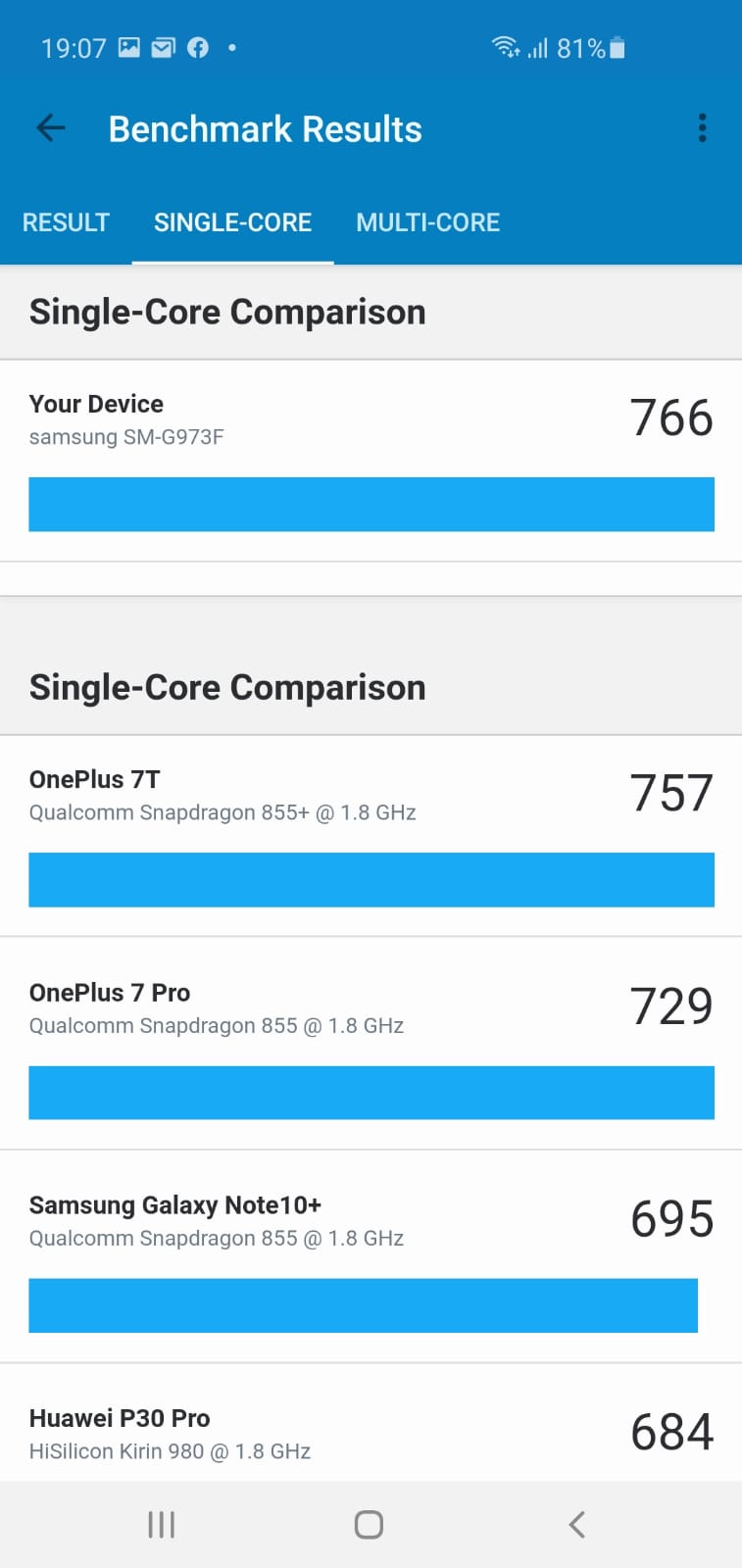
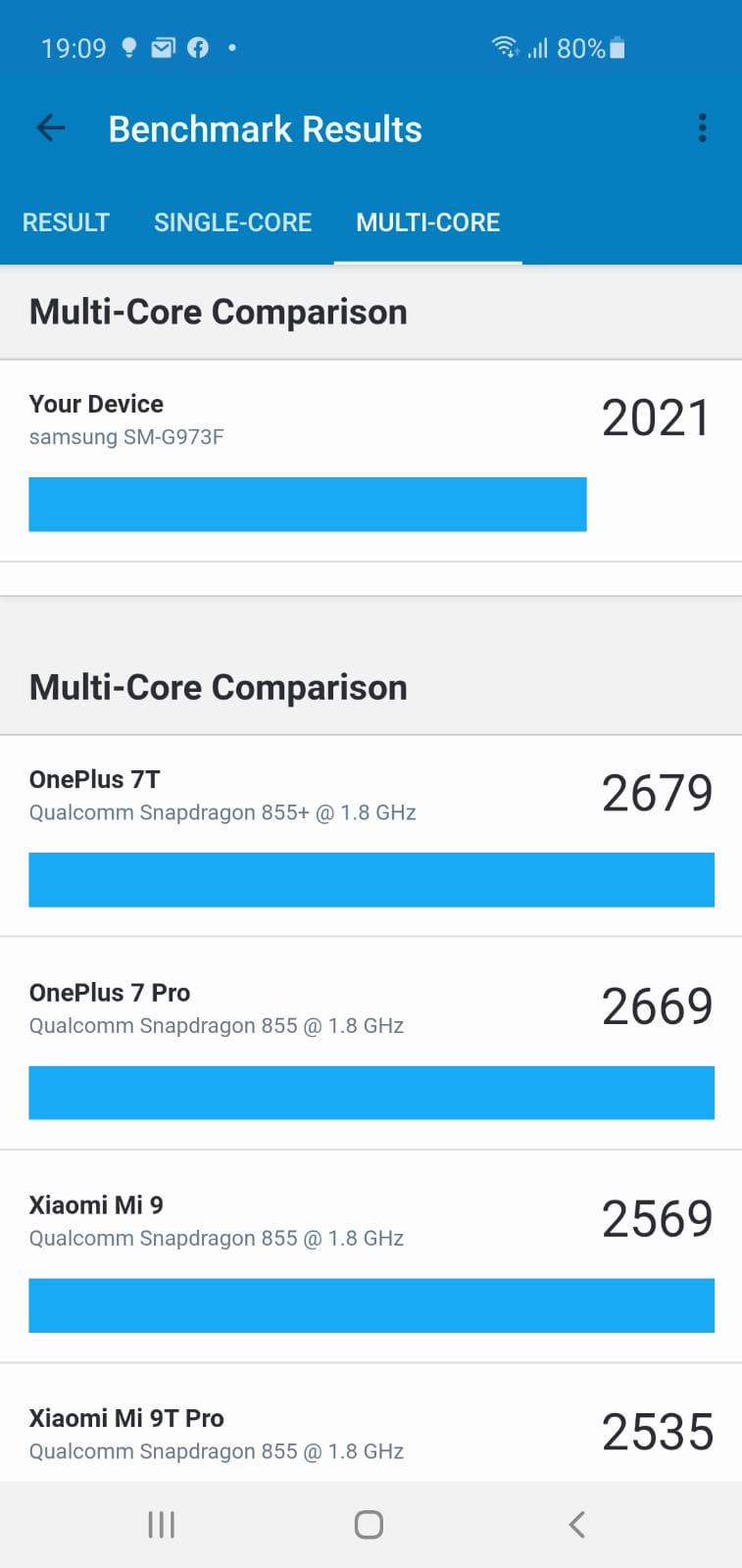
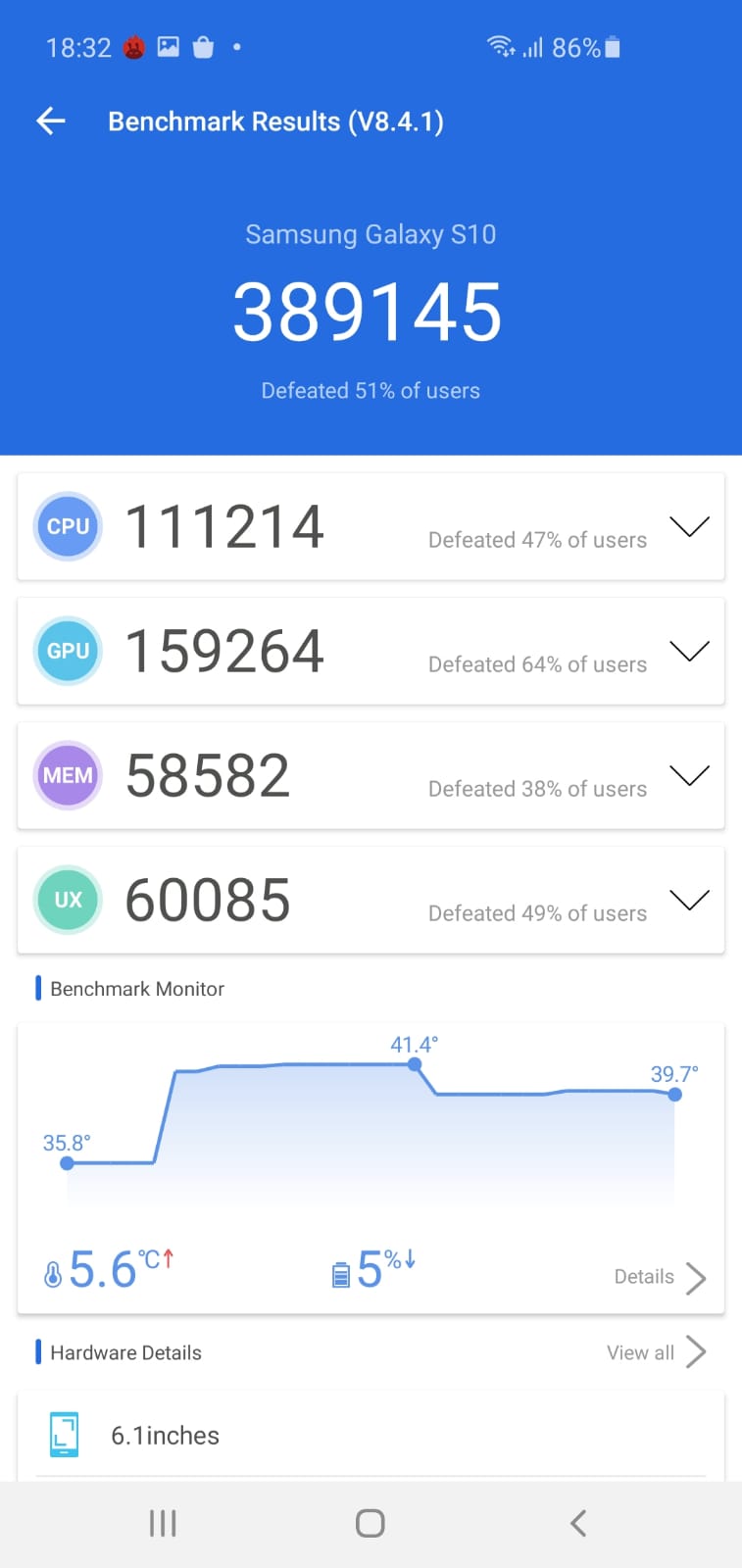
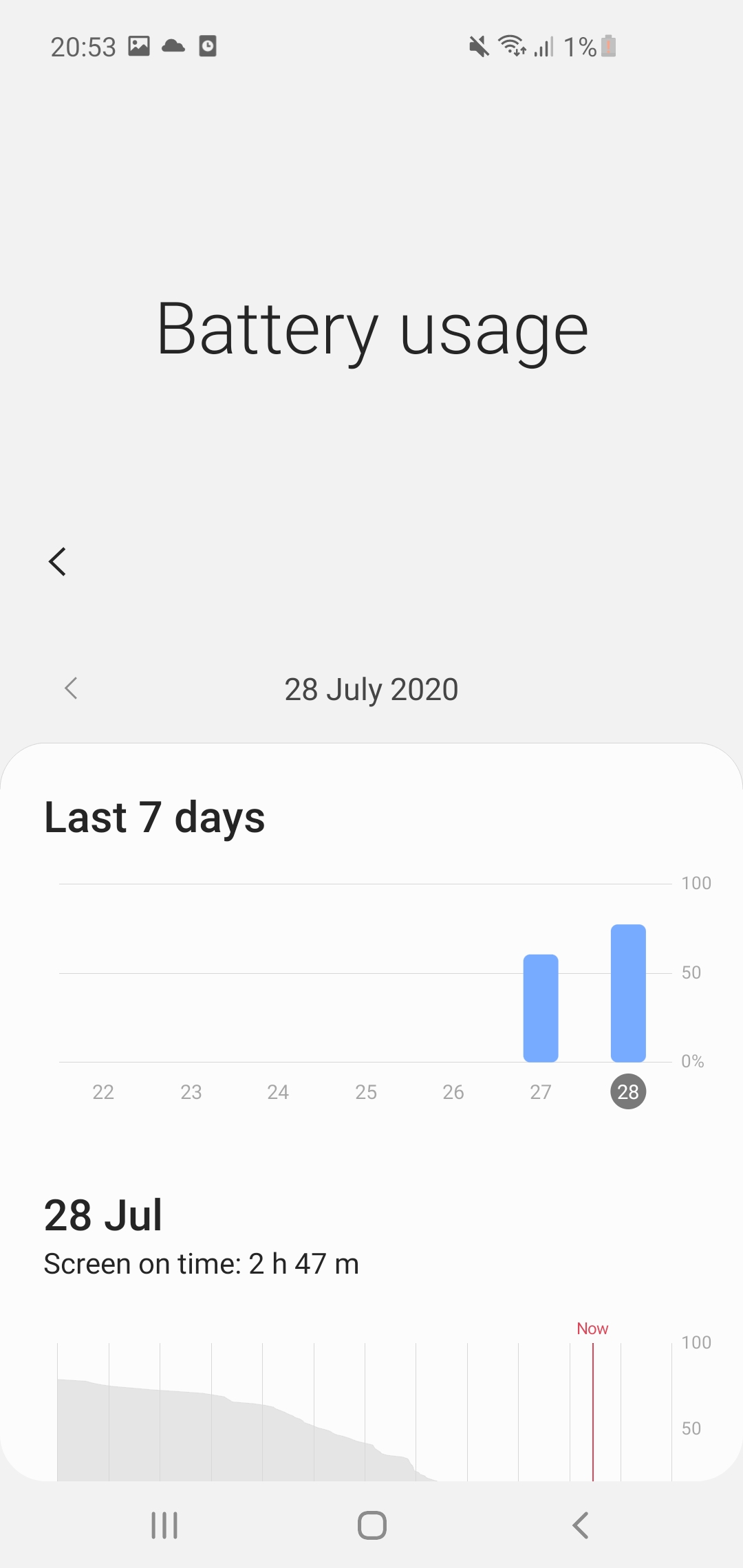
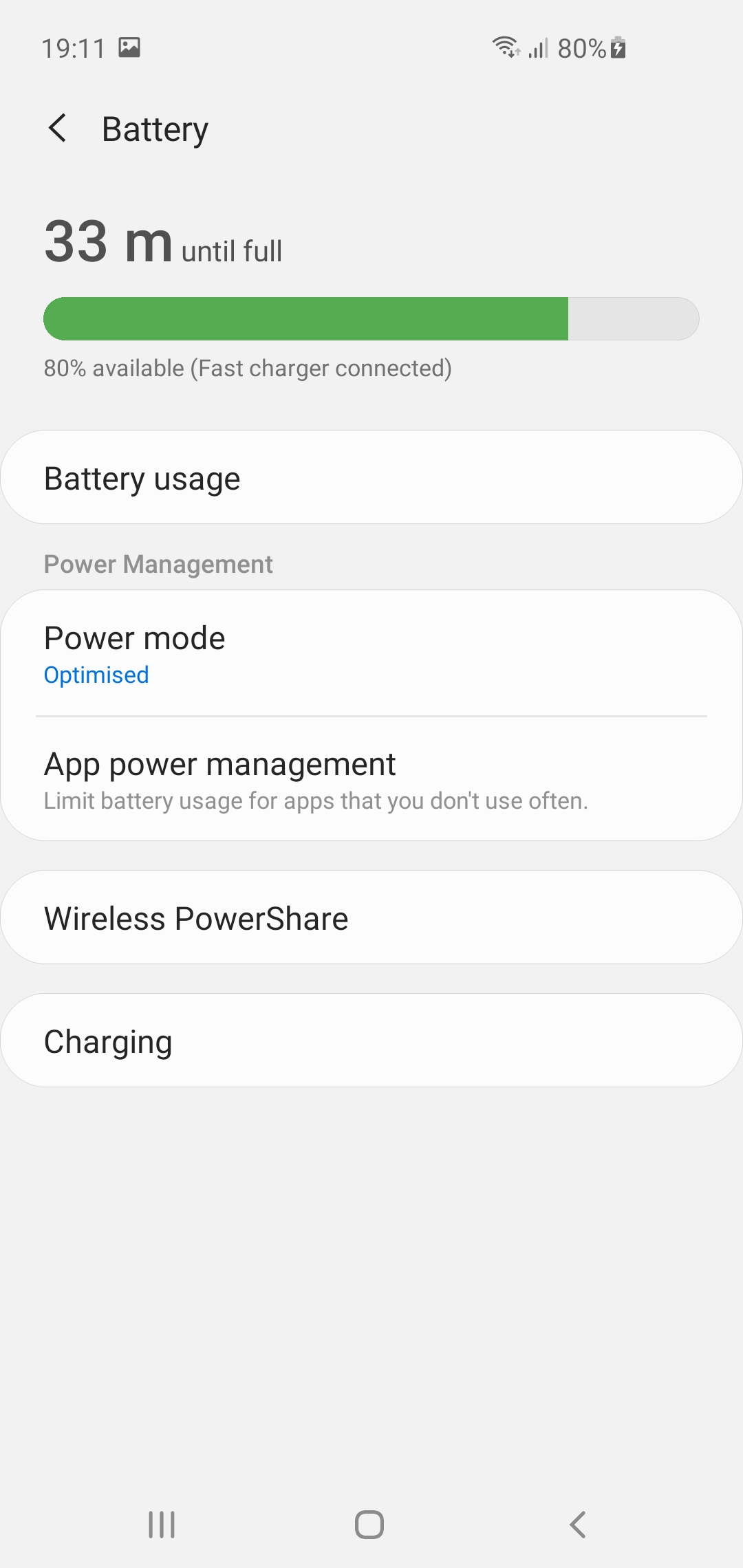

 Check Price
Check Price
